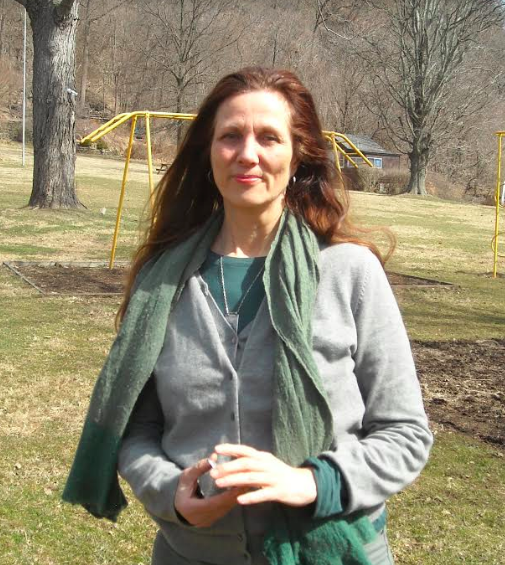
By Barry Warner
The American eel, Anguilla Rostrata, is born in the Atlantic Ocean and enters North American estuaries, including the Hudson River as tiny ‘glass eels’ each spring. The species is in decline over much of its range and baseline studies of populations are crucial for management decisions.
“Laurie Seeman started with the American eel project at Minisceongo Creek in 2009,” said Nicole Laible, Environmental Management Assistant. “During its pilot year, the New York State Department of Environmental Conservation Hudson River Estuary Program trained a handful of volunteers. Under the leadership of Laurie Seeman and other dedicated volunteers, the eel project grew to a large list of almost 70 volunteers in 2013.”
“Laurie dedicated hours of service to this project, worked with NRG Energy to build the project and recruited many volunteers over the years,” Laible continued. “Additionally, Laurie reminds volunteers to see the beauty in their communities and science work and sees this project through an artistic lens, which is very unique and inspiring. Laurie also participates in several Rockland projects including serving as a board member of the Rockland Task Force on Water Resources Management, prior Chairperson of Sparkill Creek Watershed Alliance, voting member of the Rockland Water Quality Coordinating Committee and member of the newly formed Minisceongo Creek Watershed Alliance.”
“The American eel is called a migratory fish because it’s a being that journeys more than a year between the Sargasso Sea off the coast of Bermuda and travels in tributaries, matures and comes through the Hudson River to streams and the Minisceongo Creek,” Laurie Seeman told the Rockland County Times. “They start out as tiny, clear eels and by the eighth week, their body mass increases and begin to be pigmented to look like the sediment on the bottom of the Creek. We can actually see all of the organs through their clear skin. The eels are trapped with a Fyke net, a cylindrical mesh fabric held open by metal hoops and allows water to pass through it. There are two winged panels that measure about 13 feet and we anchor the panels on either side of the creek. The one-and-a-half-inch eels swim in the net and at the other end is a funnel that ends up in a nose cone. We use water waders in the stream. We open the mesh and take the eels out, put them into a bucket of water on the shore, put 10 eels on a special cloth, factor out the weight of the cloth and record the weight of 10 baby eels. An ‘eel ladder’ is very considerate to help the eels get over any barriers in their migratory path, such as a dam. We can also put the eels in a bucket and walk or drive them past the zone, way upstream and release them. We caught 11,000 eels in a day by an eel monitoring management team of 3-5 participants. An ecosystem is an area defined by its features that are interrelated and is a way of looking at a place by both as science and art. The eel project takes place at the creek from March through May.”
“There is a world-wide decline of the glass eel and I have been involved in the study for about 10 years,” Seeman continued. “The non-profit Strawtown Studio I co-founded offers shared hands-on nature discovery, art with natural materials, place-based education and science inquiry for students aged 7-12, who come away with a greater understanding of the world and themselves. I do this to take care of the world we live in. As an outdoor educator, artist and naturalist in Rockland County and an eye for change, I wanted to be a voice for the environment.”
Place-based education (PBE) immerses students in local heritage, cultures, landscapes, opportunities and experiences, using these as a foundation for the study of science and other subjects across the curriculum. PBE boosts students’ engagement as stewards of their local environment and community. PBE creates strong ties between local social and environmental organizations and their members in the schools and communities. Students then make tangible contributions to resolving local environmental issues and conserving local environmental quality.
Anguilla Rostrata, American eel, is a catadromous species that spawns in the Atlantic Ocean and scales streams and rivers in North and South America. The species live in freshwater as adults, usually in larger rivers or lakes, primarily swimming near the bottom in search of food. The species prefers to hunt at night and resides in crevices or other shelter from the light during the day, often burying themselves in the mud.
For additional information about volunteering, please contact Brianna Rosamilia, Conservation District Technician at rosamilb@co.rockland.ny.us or call 845-364-2719.

You must be logged in to post a comment Login